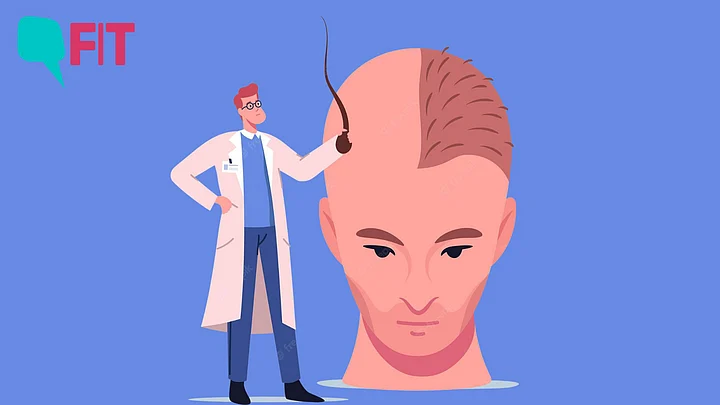Hair transplant is the most common cosmetic surgery that men in India undergo.
It is also the safest of procedures – provided it is performed by a trained medical surgeon, says Dr Manoj Khanna, National Secretary of India, International Society of Aesthetic Plastic Surgeons.
Who is qualified to perform hair transplants? What are the potential risks?
Dr Khanna, who has performed hair transplant surgeries for several celebrities including cricketer Joginder Sharma, and cricket commentator Harsha Bhogle, breaks it down for FIT.
What does the hair transplant technique involve?
Hair transplant surgeries are basically guided by two techniques, Dr Khanna explains:
The Strip Technique: This is a safer method, which requires surgical knowledge. A strip of skin is removed from the back of the head. It is set aside, and the scalp is closed immediately. From the stripped skin, numerous hair follicles are dissected, which are then transplanted into gaps in the bald area.
Follicular Unit Extraction: This is an easier technique, which requires minimum surgical knowledge. In this method, the surgeon’s team plucks out hair from the permanent zone – where the doctor removes hair follicles one by one.
Who should get a hair transplant?
Anyone who is above 18 years of age
Whose vitals are under control – controlled sugar levels, blood pressure
No allergy to anaesthesia as the surgery is performed under local anaesthesia
Who should be performing the hair transplant?
In a first, the National Medical Commission in September this year, issued guidelines on who must be performing the hair transplant surgeries – only a Registered Medical Practitioner:
Those who have formal surgical training in cosmetic procedures
Those who hold MD/DNB in Dermatology, with adequate training in surgical procedures
According to the NMC guidelines, watching YouTube videos or being lab technicians, does not qualify a person for performing a hair transplant.
"This is the most important aspect, and can turn hair transplant from a simple to a dangerous surgery. Those who are planning to get it, must be aware and assured that they are going through a trained professional," Dr Khanna explains.
What are the risks involved?
According to Cleveland Clinic, the following are the possible risks involved.
Allergic reaction to anaesthesia.
Excessive blood loss
Failed grafts or flaps
Infection like sepsis
Loss of feeling on your scalp
Scarring.
Why do people lose their lives to hair transplant?
Until about 3-4 years, people losing lives to hair transplant was unheard of. Deaths are now making headlines due to non-regulation of the sector, with no proper guideline of who should be performing the surgeries.
"These tragedies occur because of the absence of properly qualified doctors, lack of proper infrastructure, and awareness among people on who is qualified to perform them," Dr Khanna explains.
It all depends where they are doing it, and whether they are equipped to handle in case the patient has a reaction to the surgery, the NMC guidelines also indicates.
It should be a hospital with facilities for treating indoor patients
There should be a properly set up operation theatre with all protocols being followed
Availability of anaesthetist
If it is a clinic doing day care surgeries only, then it should be connected to a hospital with proper ICU and emergency needs
What is the recovery period after a hair transplant surgery?
Most hair transplants are outpatient surgeries. This means you go back home on the same day. However, your recovery process will depend on the type of transplant you have.
According to Cleveland Clinic, the days after surgery, you may be able to:
Day 1: Remove bandages.
Day 2: Wash your hair.
Days 3 to 5: Return to work and start light activities.
After 10 days: Remove stitches (done by your healthcare provider).

